Last-Minute NYC Holiday Gift Guide 🎁
We’ve created a holiday gift guide with presents for the intrepid New Yorker that should arrive just in time—


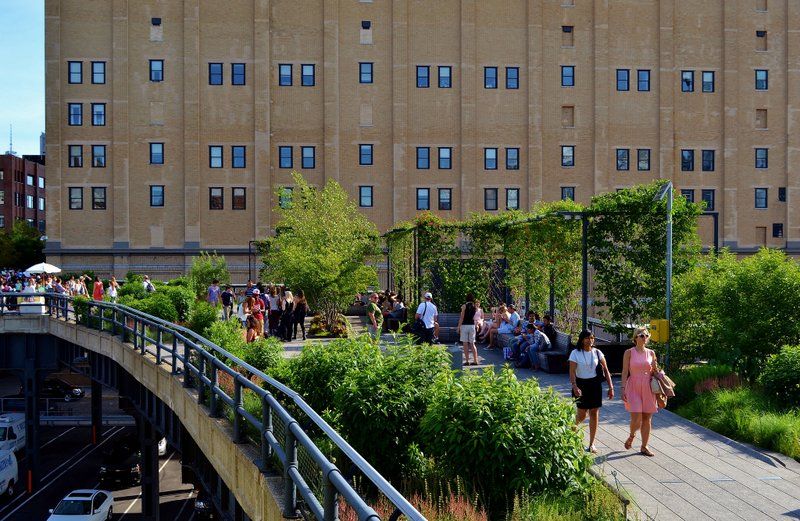
Photo by gigi_nyc via Flickr
Since 2009, people have hailed the High Line as the savior of declining west Chelsea, a neighborhood that is now a burgeoning food and art gallery hub of New York City. Lying fallow for years as an abandoned infrastructural element above Chelsea’s streets and storefronts after being used by freight trains for twenty years, it became an overgrown meadow, an unusual sight in the city, and many talked of demolishing it for good.
Thankfully, efforts by the community and various organizations like the nonprofit Friends of the High Line campaigned for its renovation in the late 1990s. After years of planning and construction, the elevated railroad became an elevated park, attracted millions to its picturesque views, and revitalized the entire neighborhood’s economy and real estate. The High Line is an old-fashioned American success, and though its current form is one of the newest attractions in the city, it still has its fair share of secrets.
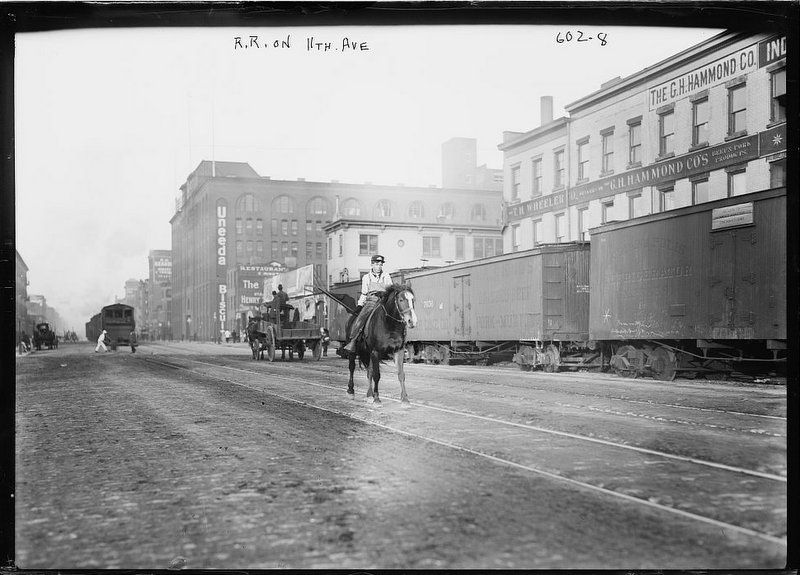
Photo from Library of Congress
Before the advent of widespread subway systems, 10th and 11th avenues once used street-level trains. To ensure at least a bit of safety, the railroads would hire “West Side Cowboys” to wave flags in front of trains and help civilians cross the busy streets. Unfortunately, people who wanted to avoid waiting at the intersections for the trains to pass would attempt to run across the tracks against the warnings of the Cowboys and be hit by incoming freight trains so often that 10th became known as Death Avenue. New Yorkers haven’t changed much.
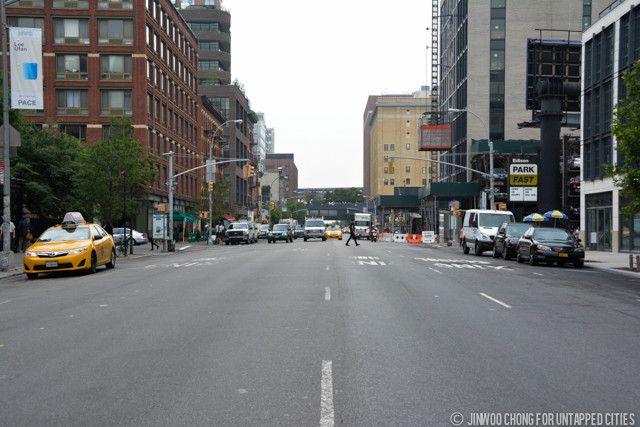
10th Avenue today
The High Line was constructed as an above-ground train track partly because of the number of accidents that occurred around the area. The city debated what to do about the danger for quite some time until in 1929 it endorsed Robert Moses’ West Side Improvement Project, which called for an elevated highway running through Chelsea.
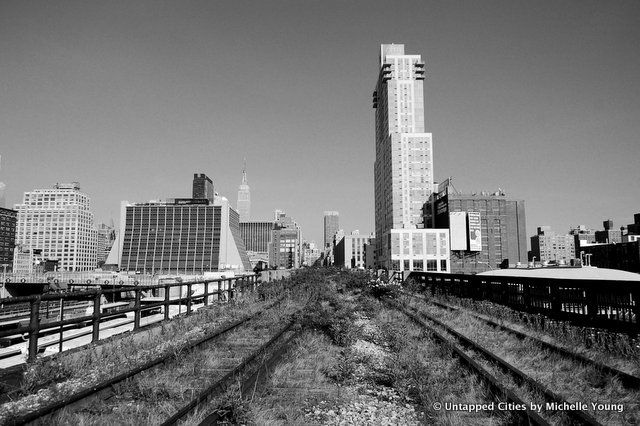
With the advent of interstate trucking taking much of the transportation load off of the freight train business, traffic on the High Line ground to a halt. Over time, the rails became rusted and weeds grew out of control. The elevated railroad was simply a site popular to urban explorers (and would have most definitely made for an exciting abandoned site in the 80s). Around then, a group of landlords in the Chelsea area campaigned to have the entire railway, now a waste of space, demolished. A campaign to’ ‘Save the Tracks’ followed, led by Chelsea activist Peter Obletz, and was successful.
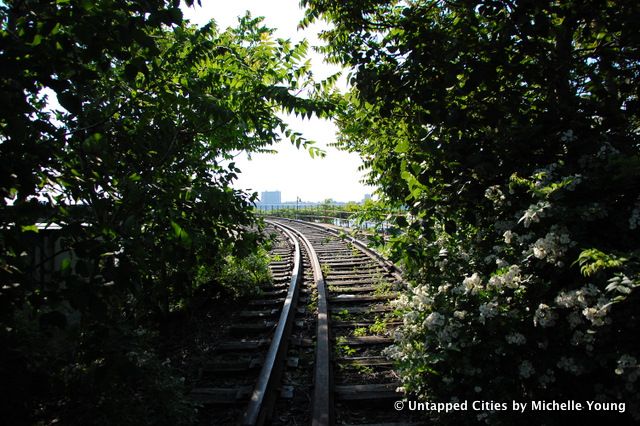
The park’s journey to renovation really began when it was officially slated for demolition after having been partially dismantled over the past decade by Mayor Rudy Giuliani’s administration. Friends of the High Line became involved, raised money, and a plan to renovate the space into a public park was born.
See more photos of the park’s abandoned third section before construction here.
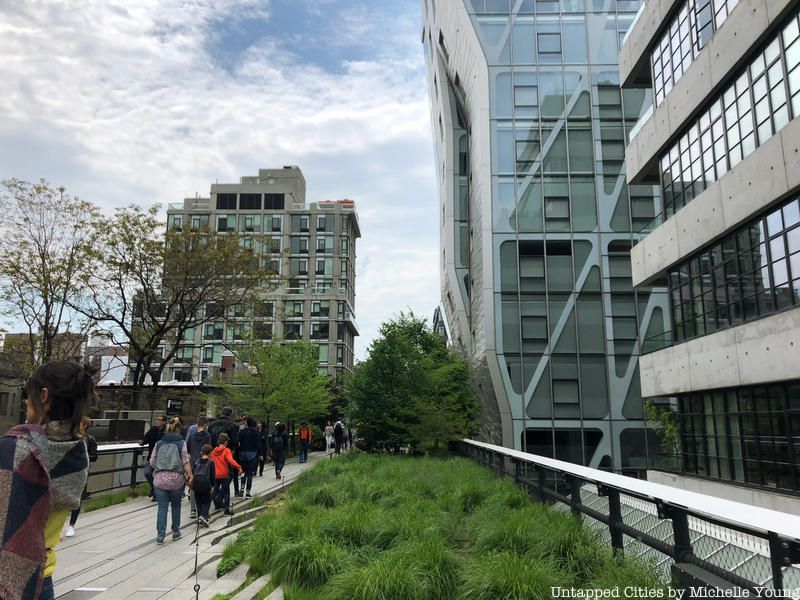
Look familiar? The Coulée Verte René-Dumont is actually in the 12th arrondissement of Paris, built in 1993 out of a repurposed railway. It follows the old Vincennes railway line and crosses an elevated viaduct called Viaduc Des Artes as it reaches the Bastille. Retail shops are housed within the arches of the viaduct.
The High Line, the Coulée Verte’s American counterpart, was actually meant to have connecting retail space under it, but plans were discontinued after spaces under the park became privatized. One of the most famous uses of one of these spaces was by Banksy, who created a pop-up gallery there during this New York residency.
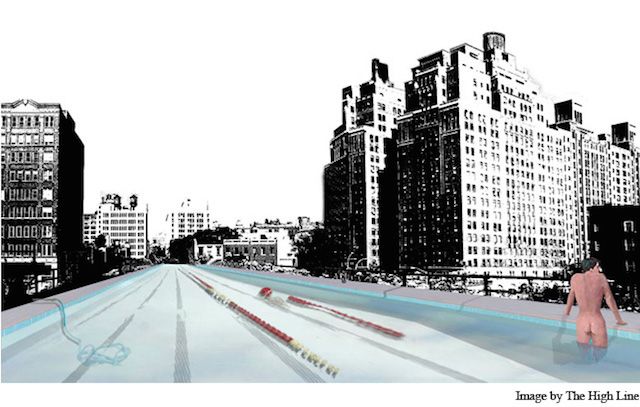
When the project to renovate the railway was green-lit in 2003, Friends of the High Line held a design competition trying to find the best approach to reinventing the space. Some of the ideas they received were quite true to what the park is today: grass, benches, elevators, and some clever re-appropriations of the former railway tracks. What they also got were some wacky plans to convert the entire space into its own building or a mile-long public swimming pool.
You can check out more discarded ideas here.
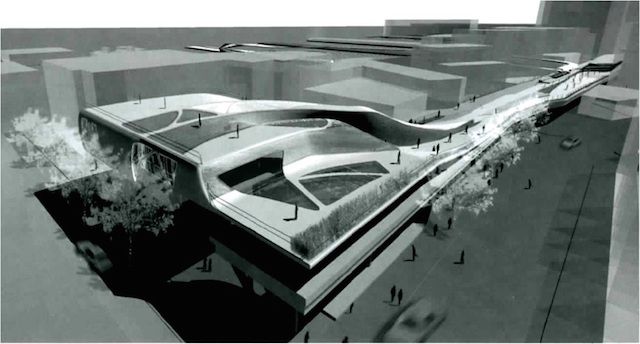
A heavier design featuring a building built into one of the High Line spurs’ ends
 Hector’s Cafe & Diner located at 44 Little West 12th Street
Hector’s Cafe & Diner located at 44 Little West 12th Street
Hector’s Diner was where all the diner scenes for Taxi Driver starring Robert DeNiro were filmed and where many of the Law & Order episodes were shot. Currently, it sits nestled under the High Line, surrounded by chic boutiques and expensive eateries, a stone’s throw from The Standard Hotel.
In the 1930s, the Meatpacking district produced about a third of the country’s meat. Hector’s used to open at 2 am for employees clocking in for their shifts. Though Hector, the original owner, is long gone, the diner is still open, proven to be one of the city’s sturdiest businesses.
Believe it or not, the park only contains 18 inches of soil from which all of its plant life grows. With such little space to support the many different grasses, bushes, and meadow-like plants that once grew freely all over the railway, the High Line was faced with the difficult task of draining water from its green spaces and also being able to conserve it in the summer. It actually uses multiple levels of filters and drainage systems to collect, store, and distribute falling rainwater to its plants. It was one of the many innovations created by James Corner Field Operations and Diller Scofidio + Renfro, two landscape architecture firms that Friends of the High Line selected to lead the park’s design process.
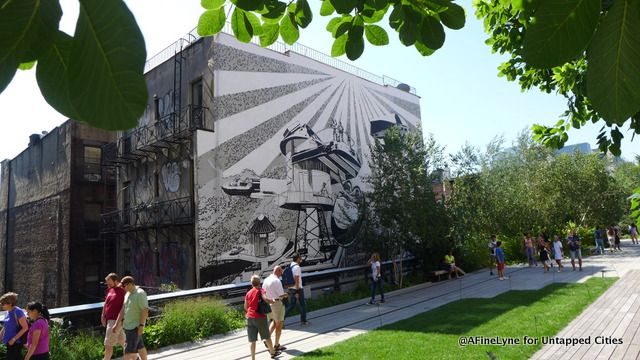
Dozens of exhibits line the sides and the pathway of the High Line, especially now in the summer months. From a set of architecture firm-designed all-white Lego sculptures out in the open for people to break apart (part of the Panorama outdoor art exhibition, still open today) to water tower condos on murals adorning the sides of buildings, artists are taking advantage of the space and the constant traffic.
The park also contains some more permanent works like the movable benches set into the surviving railway tracks and the water-covered pathway where most visitors like to cool off their feet, but the rest of its open spaces have hosted a multitude of different sculptures, murals, installations, and performances. The pieces, along with the High Line’s beautiful views of the streets and the Hudson River, make for some killer Instagram posts as well.
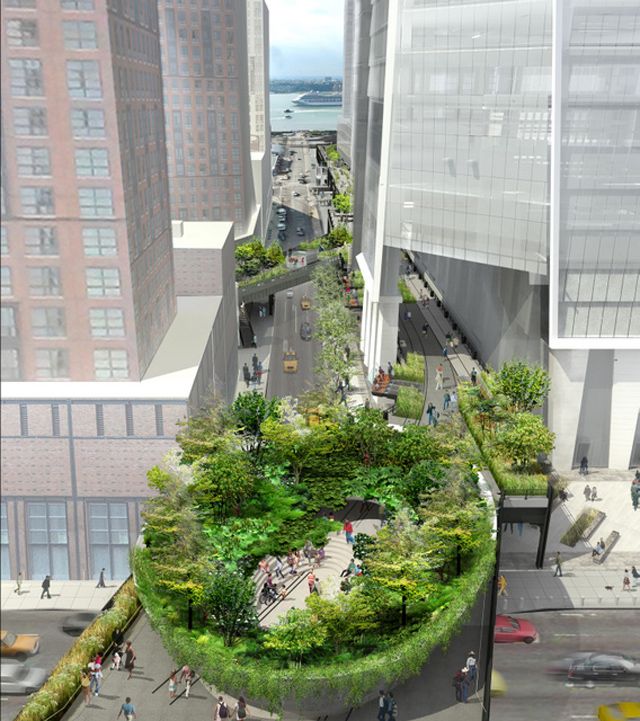
Images via James Corner Field Operations and Diller Scofidio + Renfro.
Landscape Architect James Corner of James Corner Field Operations and Architect Matthew Johnson of Diller Scofidio + Renfro presented their vision for a dramatic climax to the elevated park- an extraordinary, intimate, floating garden marking the northeast terminus of the High Line, dubbed as “the bowl.” Crowds later christened the project “the nest.”
The third section of the High Line was opened in 2014, but parts of it, especially toward the end, remain under construction. The nest will contain tiered seating and gardens all around its edges, immersing visitors in a natural forest right in the city.
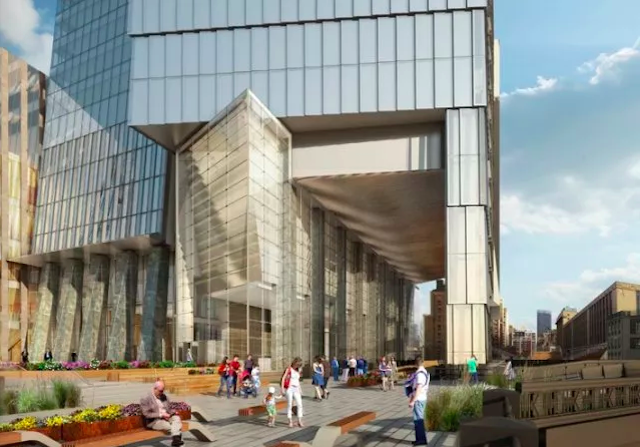
The third section, which will navigate a very different landscape than the other two sections that is dominated by glass skyscrapers, will also contain openings for people to enter their offices. This rendering of the future tower that will be the headquarters of Coach, L’Oreal and and SAP, currently being built over the High Line, shows an entrance lobby leading out onto the park itself, a convenience for a lucky few in the city.

Once considered a declining neighborhood of New York City, the High Line has brought millions of tourists and New Yorkers (and their money) to the area. While there are some reports of small businesses closing due to rising rents, over 30 new projects had taken up residence in the Chelsea area as a result of the park’s increasing popularity in 2009. The High Line has also spawned a worldwide trend of elevated parks. It seems many major cities are taking a leaf out of New York’s book. As Chelsea continues to grow into one of Manhattan’s busiest and trendiest neighborhoods, we may be seeing a few more High Lines around the world.
James Corner Field Operations, one of the companies behind the NYC High Line, has taken its railway-repurposing business to Florida, where plans for an ‘Underline’ park built in the shadow of an abandoned elevated railway in Miami are underway. The firm is working with another nonprofit, Friends of the Underline, to finance the project, which will be built upon an existing bike trail but expanded to include room for benches, fountains, and art installations.
Next, check out 10 High Line inspired projects around the world and read about the invention of the Oreo cookie in Nabisco’s former factory at the Chelsea Market. Get in touch with the author @jinwoochong.
Subscribe to our newsletter